A year has passed since the beginning of the archaeological project “Secrets of the Great Abkhaz Wall”. The excavation participant, volunteer Vasily Nikulin, shared his impressions of this work, talked about artifacts and asked experts about the significance of the finds.
Vasily Nikulin, volunteer, participant in the project “Secrets of the Great Abkhaz Wall”
In June, 2019, a large-scale scientific project “Secrets of the Great Abkhaz Wall” was launched in Abkhazia, the aim of which was to study one of the most mysterious and, at the same time, little-studied archaeological sites of Abkhazia - the Great Abkhaz Wall. In June 2020, researchers were able to talk about the results of annual work.
A group of archaeologists and historians, led by Shandor Kaitan, junior researcher at the AbIGI Archeology Department, completed the excavation of two towers of wall No. 39 and No. 123 (the total number of towers on the map of Yuri Voronov is 279 with a wall length of about 160 kilometers from the Kelasur River to the Ingur River – ed.) and parts of the fortress of Kuatania-Surka in the area of the village of Khiatskha. I was lucky to be among the participants in this project and see a lot with my own eyes.
At the beginning of the project, we set ourselves the task to solve three main puzzles: when the wall was built, by whom and for what. During the year of work, many artifacts were discovered, the researchers spent “in the field” several days and nights .... However, the secrets surrounding the ancient structure have not diminished.
Earlier, in 2019, excavations were carried out near the village of Khiatskha in the Gal district of the allegedly Kuatania-Surka fortress. The description of the defensive structure is mentioned by the local historian Joseph Adzinba in his book “Architectural Monuments of Abkhazia”, published in 1958. Four pits were laid last year (a test excavation site for archaeological artifacts - ed.) there, each of them turned out to be rich in finds: ancient burial sites, pythoses, disparate parts of various ceramic vessels, and metal products.
Excavations in tower No. 123 near the village of Dzhgerda in the Ochamchira district resulted in found pieces of various ceramics, two millstones, a spindle (a weight for weighting a hand spindle), metal knives, an awl, arrowheads, fragments of household metal products, a blue handle from a glass jug, a metal disk that looks like a coin with a hole in the middle.
A small amount of ornamented ceramics, tetrahedral forged nails, animal bones and teeth were found in the cultural layer on the patrol site adjacent to tower No. 123. In a pit at the foot of the tower on a leveled platform, a metal share was found - a sharp tip of the plow (opener).
The last tower where the group worked was tower No. 39, located near the banks of the Machara River on a personal plot in the village of Merkheul (Markhaul) in the Gulrypsh district. This tower “prepared” many surprises for researchers.
Mossy secrets
Archaeological excavations in general are a slow and laborious process. Its subtleties and mechanisms are best experienced when you hold a hoe, a shovel, a brush and other tools necessary when opening the cultural layers.
An employee of the Abkhaz State Museum and project participant Dmitry Schastny says: “For a long time it was believed that the towers of the Great Abkhaz Wall were scarce for archaeological finds, so it was important for us not only to find something specific, but to find at least something. Tower number 39 was not chosen by chance: during the study of the entire line of defense, we drew attention to the large amount of ceramic material around it. For the archaeologist, this is the first indicator of the presence of a cultural layer. As a rule, such traces remain in places of settlements or long-term site. An important factor in choosing the excavation site was the relative proximity of the tower to Sukhum, which allowed us to save energy, time and money for organizing the expedition.”
Excavations of tower No. 39 began with the definition of a level (a geodetic tool for leveling, that is, determining the height difference between several points on the earth's surface - ed.) of elevations, which are necessary, subsequently, to compile a topographic map of the object.
Before starting this work, the tower was cleaned of dense thickets - shrubs, grass and trees. Archaeologists had to spend the whole day just getting rid of plants and taking measurements. Then they started digging.
Just in the process of clearing the tower from the outside at a height of 2.5 meters, beneath the moss, in the layer of mortar fastening calcareous cobbles, fragments of pythos were discovered (a large ceramic vessel for storing food - ed.). According to Shandor Kaitan, this finding after its study will help clarify the period of construction of the tower.
During the study of the Great Abkhaz Wall, archaeologists for the second time (for the first time ceramic bookmarks in lime layers were discovered during the first stage of the study in the masonry of the walls of tower No. 3 of the Tkhubun garrison - ed.) found similar engineering solutions from ancient masters: it cannot be ruled out that the tower was destroyed and rebuilt at a later time, and ceramics were used for construction as improvised material.
“We tend to separate concepts such as the dating of the Great Abkhaz Wall as a whole from the dating of individual towers and artifacts found in them, - explains Shandor Kaitan. - This approach is explained by the fact that based on excavations of a single tower or a group of towers within the same area today it is not possible to draw an unambiguous conclusion about the time of construction and functioning of the entire wall. After cameral processing (cameral work is work indoors, unlike field work - ed.) and a thorough analysis of all the excavated material within the framework of the project, as well as data obtained earlier, certain conclusions will be drawn. At the same time, archaeological materials found in the towers suggest several stages of their functioning. If we talk only about tower number 39, then in it were found separate objects that can be dated in the framework of the late Middle Ages - the New Time.”
Unlike the excavations that were previously carried out in the Ochamchira and Gal districts, the excavations in the village of Merkheul of the Gulrypsh district took place in a sparing mode: two days in the field, two at home. This made it possible not only to relax, but also to discuss with a fresh mind the purpose of the found artifacts, to compare them with well-known analogies already described in the literature.
Heartfelt greetings from the past
It is interesting that during the excavations, many artifacts with heart symbols were found - bronze buckle and plates, buttons. At the same time, it became clear that, despite this “cordiality”, the residents of the tower were able to stand up for themselves with weapons in their hands. Inside the tower in the upper layer of the ground, a spherical lead bullet with a diameter of about 16 mm was found, used for firing from flint and impact guns. Subsequently, lead bullets were found in deeper layers.
It is known that the first small arms appeared in the developed Medieval period. For the first two hundred years, gunsmiths worked to improve charge ignition. At the beginning of the 16th century, they invented the flintlock castle. Almost unchanged, flintlock guns remained in service with various armies for a long time. For example, Russian troops used such bullets during the Crimean War of the 1854-1855s (according to the version of souvenir dealers on the Crimean peninsula in Sevastopol). In Abkhazia, rifles with flintlock were used until the beginning of the 20th century.
Fire and human remains
In the same layer, and then deeper and deeper, along with ceramics and traces of the conflagration - more on this later - fragments of bones began to come across: the phalanx of the finger, individual vertebrae, ribs. Since the bones were interspersed with fragments of animal bones, archaeologists did not immediately attach importance to the find. However, practically in the mainland (a layer that does not contain traces of human activity - ed.), a fragment of a human jaw with well-preserved teeth was discovered.
Tower number 39, like many other towers of the Great Abkhaz Wall, was a two-storied one. This is evidenced by deep beam openings in the walls. Judging by the location of the found bones of the human skeleton, during the attack on the tower, a person could be on the second floor. The scattered coals around the entire perimeter of the tower, as well as stones bursting from high temperature, indicate that there was a strong fire. The floor on which the man was lying collapsed, and the walls partially collapsed, and the man was buried under them.
According to some sources, during the attacks, women and children usually hid on the first floor of the tower, while all the men who owned weapons were on the second, from where they fired rifles and dropped stones at the enemies.
Archaeologists have not found other fragments of bones that can determine the sex of this person: either they were burned in a fire, or they were taken away by wild animals. Upon completion of the study, human remains will be buried.
In the immediate vicinity of the bones, bronze elements of clothing were found (a button with an ornament, a cufflink in the shape of a sheet or a heart, sewn plates, a button-flake, a mushroom button), an iron shoe horseshoe and household items (copper alloy thimbles, a metal spoon, forged nails, iron knives, articulated scissors, iron key, bronze openwork handle).
“For each of the project participants, this was the first independent large study. Therefore, each find caused us genuine emotions. The most popular material was a variety of ceramics, most often fragmented. A separate item was metal finds. They caused a special thrill among the entire project team,” Dmitry Schastny shares.
Wonder dishes
In the left far corner from the entrance to the tower, the remains of a thick-walled pythos have been preserved. This vessel is similar to the pythos found at excavations in the Gal district, and even earlier in the Kelasur garrison of the Great Abkhaz wall. Unfortunately, few fragments have survived from it. Such ceramic vessels were usually buried in the ground. Bottom was installed on a lime pillow to avoid breakage during an earthquake, which from time to time occurs in the territory of Abkhazia. Pythos was used to store wine, water and bulk products.
At the same level, two meters from the pythos, there were fragments of an irrigation bowl of light green color (irrigation ceramics are glazed clay products - ed.). It was possible to connect the found parts to each other. On some fragments of the vessel, small through holes were made along the fault line. This suggests that the dishes broke in everyday life during its use, but broken shards were pulled together with each other - possibly with leather laces - and continued to be used.
“We always rejoice when it is possible to recreate the shape of a vessel, because it enriches the scientific database and allows us to create a classification of artifacts of the Great Abkhaz Wall in the future,” says Shandor Kaitan.
Photographs of the found ceramics and individual fragments of glazed ceramics with ornaments have already been sent for consultation to the Azov State Museum - there is a large collection of similar finds created in the workshops of southeastern Crimea, one of the largest centers for the production of glazed ceramics of its time. According to museum staff, the artifacts found are believed to date back to the Ottoman period and could well complement the artifact collection exhibited at the Abkhaz State Museum.
Gunsmiths
Perhaps the most significant find found in the excavations of the tower was a bronze bivalve bullet designed for casting spherical lead bullets. It became clear why the metal spoon was used, which was found earlier and which caused a dispute between the expedition members.
The diameter of the manufactured bullets with a bullet is 12.9-13 mm.
An interesting fact: the bullets from the tower number 39, as well as the tower number 125 near the village of Dzhgerda, have analogies in the materials of excavation of settlements of Cossacks-Nekrasovites, some of which, under the pressure of the Russian Empire in the mid 1730s, moved to the Ottoman Empire and took the citizenship of the Sultan. Such bullets were found in the areas of the Old Kuban, Azov, Anapa, Lyutik / Sed-Islam and Akkerman fortresses - territories belonging to the Ottoman Empire. There is an assumption that such bullets are of Turkish origin.
“As you know, the North-Eastern Black Sea coast from Abkhazia to Taman has long been inhabited by representatives of the Abkhaz-Adyg world. This causes a certain similarity between these peoples in culture, customs, beliefs, traditions and so on. In this sense, objects found in the towers of the Great Abkhaz Wall reflect certain fashion trends of the time. This explains the similarity of some of the found objects from the towers with distant, it would seem, analogies, in particular, among the Cossacks-Nekrasovites. This is not surprising. A vivid confirmation of this is the traditional clothing borrowed by the Cossacks from the highlanders,” Dmitry Schastny explains.
Of particular note is the knife found during excavations in the 39th tower, which has a long crescent-shaped working part with a curved back and an emphasis for the handle. Special sickle-curved knives for pruning vines have been used for a long time and are still used. Structurally, the knives have not changed, but are gradually becoming obsolete.
Gunpowder or adjika?
To determine in detail the way the wall and tower are connected, archaeologists also laid a small pit near the tower, on its outside.
The first finds - animal bones and fragments of ceramics from various dishes - began to come across at a depth of 20 centimeters from the surface of the earth. A stone mortar was discovered a little deeper. During the excavation, several speculations appeared, for which the residents of the tower could use it. Firstly, in a mortar they could just cook adjika according to the classic Abkhaz recipe. However, for adjika they traditionally used large, flat stones - ahakya (a special rubbing stone). The mortar could also grind herbs for various medicinal potions. Thirdly, it is suitable to mix the ingredients for gunpowder. In the Caucasus, gunpowder was made in mortars or using hand mills from saltpeter, sulfur, goat manure, coal and a special kind of grass.
In addition to the listed artifacts in the excavation, in a layer of ground with a large amount of lime, coal and ash were found: pieces of coal, a large fragment of a millstone, iron slag, a flattened lead bullet, irrigated ceramics with painting, animal bones (wild boar and others) and unclosed metal ring of unclear purpose. A stone pestle was discovered directly in the tower itself. Judging by the found artifacts, it can be assumed that a household extension could be equipped in this place.
Because the tower was reconstructed later, there is a high probability that the early materials were cleared from it and thrown out as unnecessary into the cliff along which the wall line runs.
“One of the possible reasons for the lack of early material in tower number 39 may be several stages of its use and desolation. If we connect the desolation with the partial or complete destruction of the tower, and the use with the restoration, then in this case it is supposed to reuse the building material from the obstruction inside the structure. In addition, this, in turn, entails the destruction of the early cultural layer. Only further archaeological excavations in all sections of the Great Abkhaz Wall can confirm or refute this conjecture,” explains Dmitry Schastny.
The expeditions planned as part of the project “Secrets of the Great Abkhaz Wall” are completed; due to the COVID-19 pandemic, the deadlines for answering questions posed to archaeologists — who, when, and why built the Great Abkhaz Wall — have been postponed from June to August.
“The project is ongoing. Ahead we have cameral processing of the received materials (encryption, description and classification). We hope to complete this work by the beginning of autumn, after which a final press conference will be held, at which we will voice our conclusions and show the most interesting artifacts of the Great Abkhaz Wall,” summarizes Shandor Kaitan.
The study is supported by the “Amshra” Foundation.
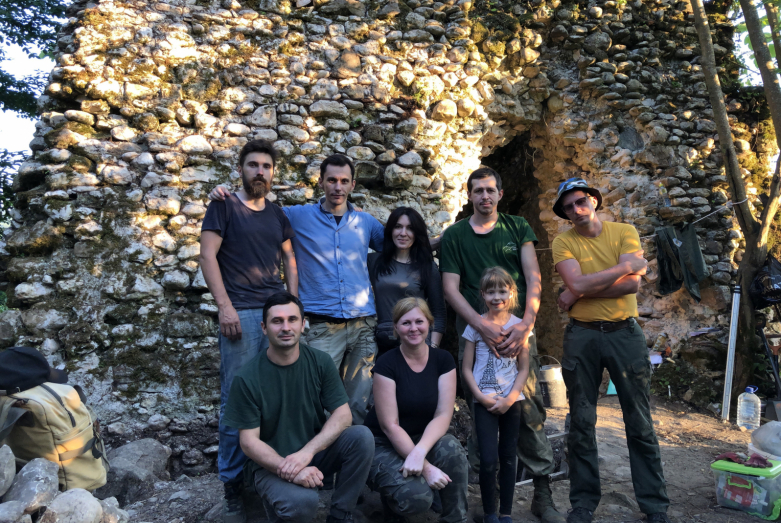
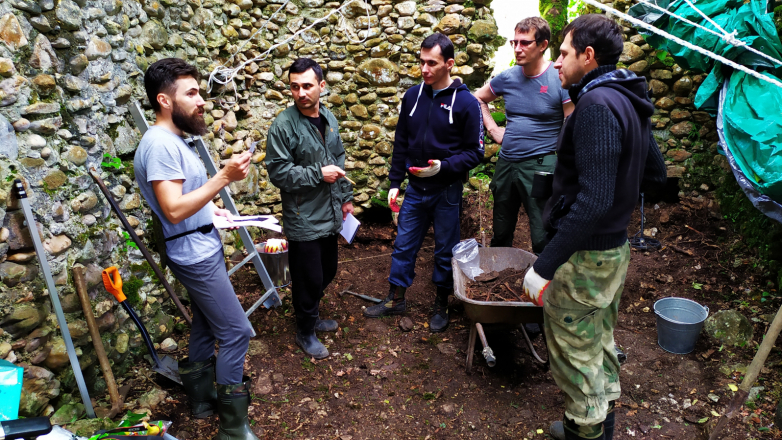
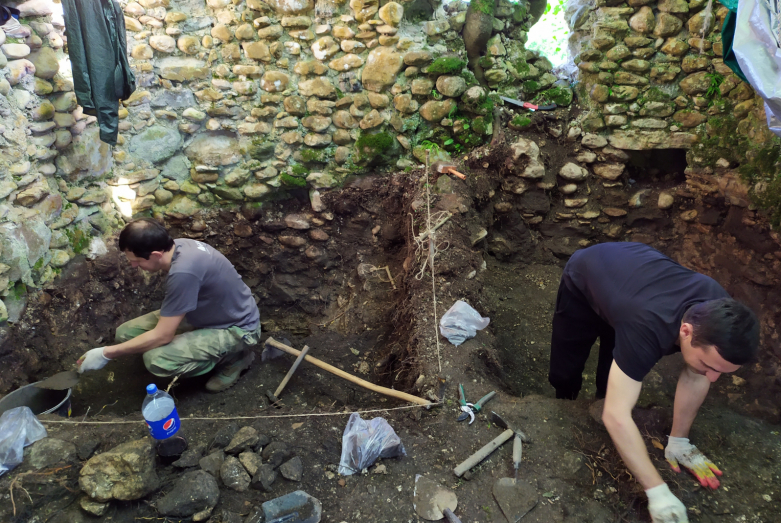
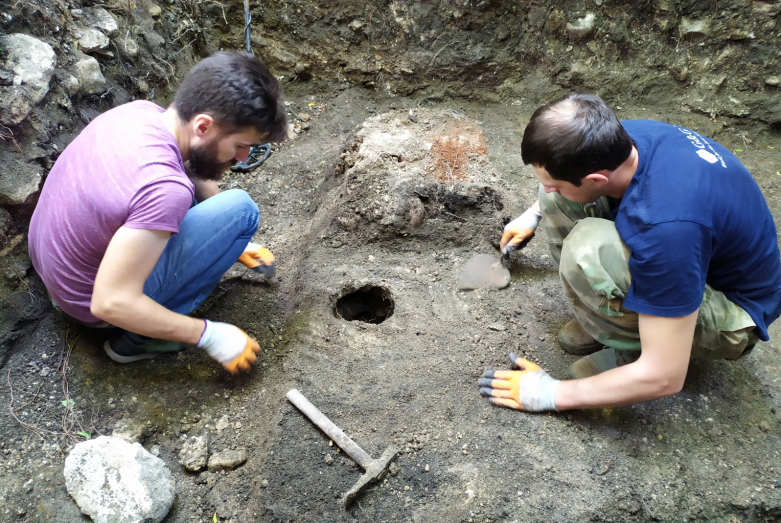
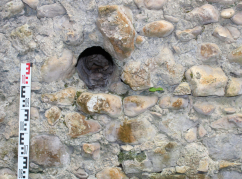
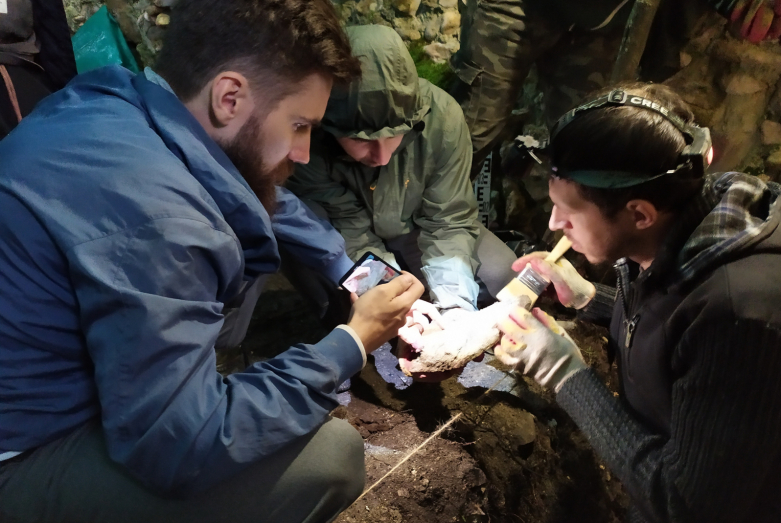
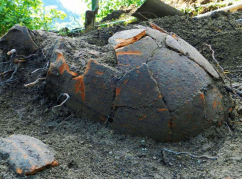
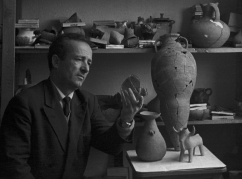
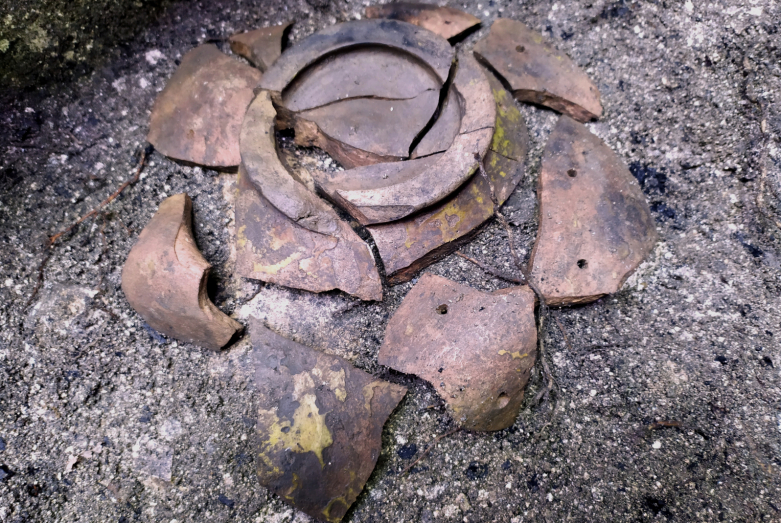
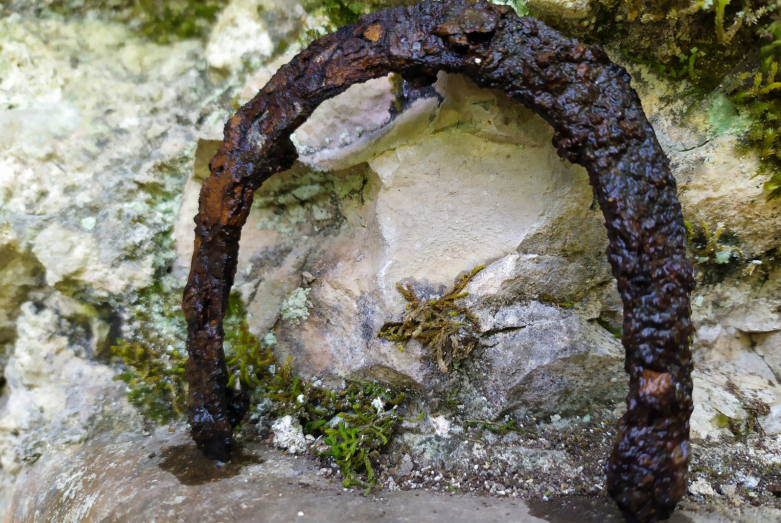
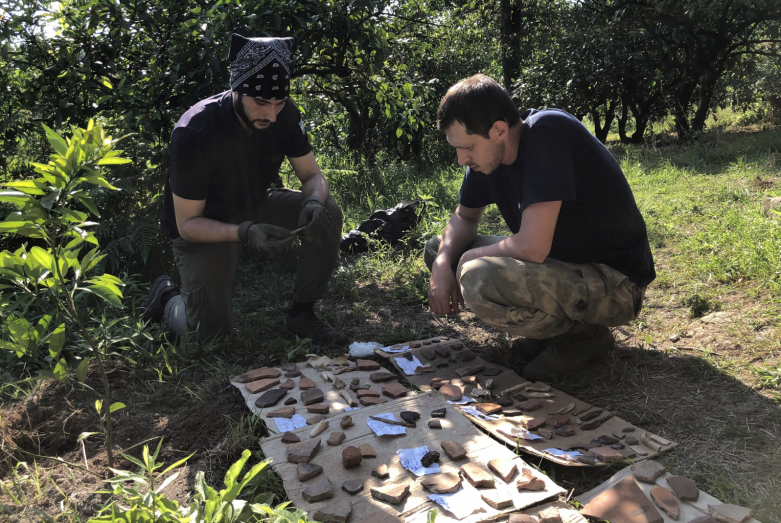
to login or register.